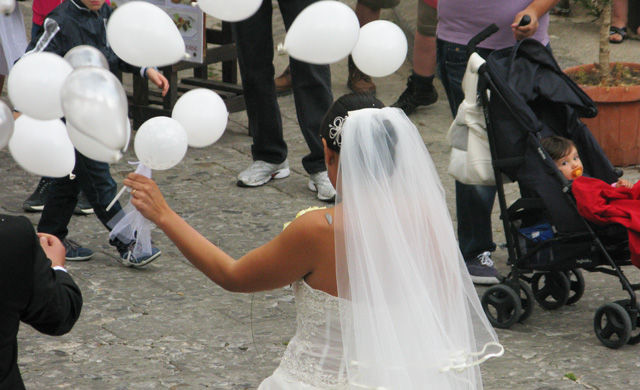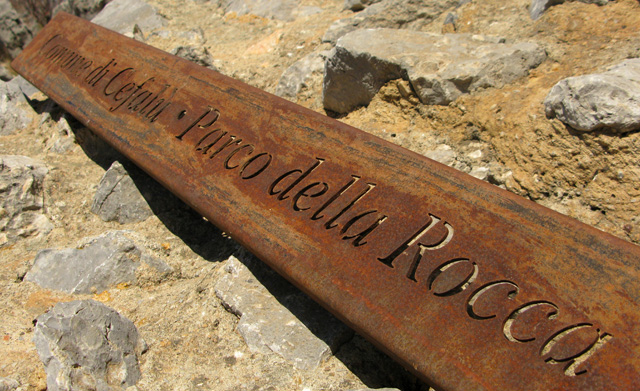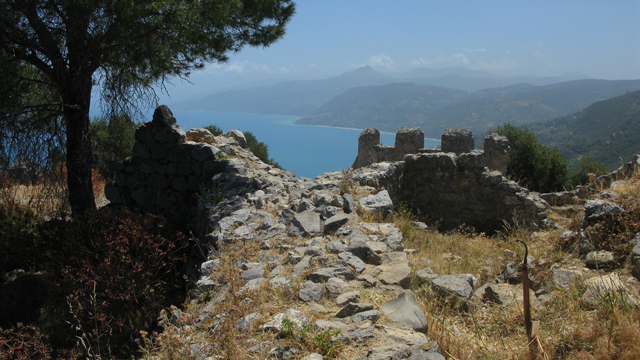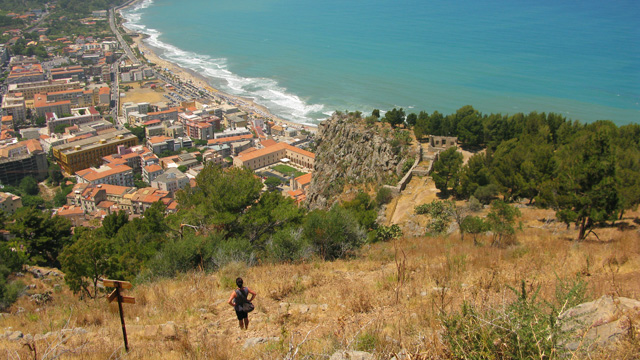We peer out of the door of the bar into the drizzle which can no longer really be called drizzle and is now plain, common-or-garden, gets-you-proper-wet rain. The girl behind the bar pulls a face. I’m pretty sure I do too. Just at that moment a bride and groom walk past on their post-wedding tour of the town. They’re grinning fit to burst and we all ‘aww’ a little bit. Somebody (me) comes out with the old platitude, ‘sposa bagnata, sposa fortunata’ (a wet bride is a lucky bride). The girl behind the bar gives a sardonic chuckle: “You know that’s only to make the brides feel better, right?” We all snort into our coffees and go back to gazing at the happy couple as they float, hand-in-hand, along the sea wall. Their photographer follows at a discreet distance.
It’s a busy day in the Duomo today: it’s only been a few hours since the blessing of the bread for frottola and already this wedding has finished. Given the number of hours that an Italian wedding usually takes up, they must have gone straight in after the bread ceremony. We caught up with them as they emerged. Or, rather, half an hour or so before. We were alerted to the wedding by the four people standing awkwardly at the door to the Duomo shooing people away. As I got closer I realised why: they’d made a design with rice on the Duomo steps – a G and an M in a heart, to signify the bride and groom’s names. The thing is that because of its positioning, it’s in danger of being kicked apart by passers by who have no awareness of their surroundings. In fact, as I watch, waiting for Giovanni and Maria (for I have discovered that those are, in fact, their names) to emerge from the Duomo, a woman does just that. The girl closest to the Duomo doors took her eyes off the ball for a moment and the woman marched straight through the middle of the rice design. The man on the far side throws out his hands to stop her, which has the unfortunate effect of startling her and making her jump, thereby kicking the rice even further out of place. There’s a collective groan from the people surrounding the doors. The woman turns bright red and scuttles away, muttering in embarrassment. Mother-in-law jokes spring to mind – it can’t be a good sign for the bride and groom to be metaphorically kicked asunder by a middle-aged woman. It’s just as well the rain’s starting.
After a soggy Saturday night in which we ran into flirty waiter again (still with his mum in tow and this time making no secret of the fact that he was being innuendous – “Wet dreams – er, I mean *sweet* dreams, ladies!”), we wake to bright sunshine. This is both good and bad: we’re on holiday and it’s sunny (good), but there is now absolutely no excuse for not climbing the Bloody Big Rock (erk). Deanna and I change into sensible shoes, grab our cameras and head out, picking up water supplies on the way.
I almost give up at the top of the first flight of steps, puffing like a grampus. Deanna, however, strides ahead, so my pride keeps me going. I gulp in some air, take a sip of water, curse the amount of wine that I drank the day before, and carry on.
As we reach the lowest defensive walls we are met by a group of cheery Italians on their way down. “Buongiorno!” they call, grins plastered all over their faces. “Are you going up to the castle?” We tell them that we are. They chortle with the self-satisfaction that comes from having already climbed to the top and being nearly back at the bottom again. “Good luck! It’s nearly three thousand metres up, you know!” I quail visibly. They laugh. I rally my sense of humour. “Well, at least we should lose some weight …” They roar with laughter and the leader pats his rotund belly with pride. “Yes, just as well, eh?!” They continue on their way down as I fashion a makeshift sling from my scarf so that I don’t have to carry my water bottles in my hands. I tie it around my waist and Deanna snorts with laughter. Apparently I’m less ‘retro hippy cool’ and more ‘crazy lady carrying her water bottles like crackly plastic babies’. Oh. Oh well …
Thankfully when we get past the steps and onto the trails carved into the hillside by generations of foot soldiers, townsfolk and, latterly, tourists, the climb becomes easier. We’re not rushing up to the top, both being concerned with stopping to admire the view – which is spectacular – at regular intervals, but we still do it in about an hour and a half. Which is better than All-Weather-Boy, who’d predicted at least two. To be fair, though, he would have been carrying a lot more weight than us, what with his ten unnecessary layers of clothing ‘n’ all.
When we reach the top, however, the time taken to climb is irrelevant compared to the beauty of what we can see around us. To one side, looking down the hillside past the Temple of Diana and the lower fortification walls, is Cefalù town, running down to bright blue sea which stretches into the hazy distance. To the other, a fairly much straight down drop below us, is the port, divided into aquamarine sections by solid, blocky, white man-made moorings and black, craggy, all-natural rocks. Meanwhile at the top, where we are, all is dust and olive trees and golden light. I sit on a wall, close my eyes, and inhale the scent of pines wafting up from below me. Cefalù, I think I love you.











2 Responses to 36 hours in Cefalù (part two)